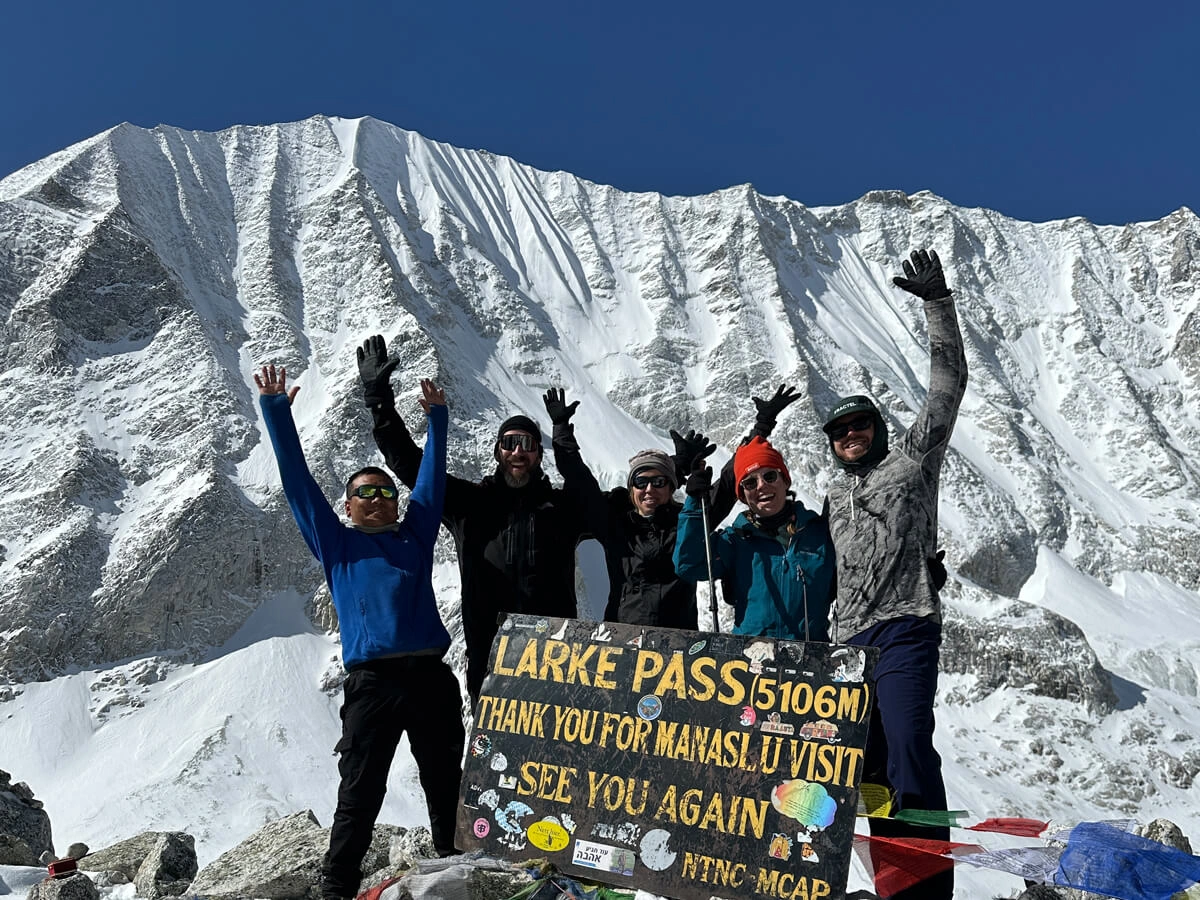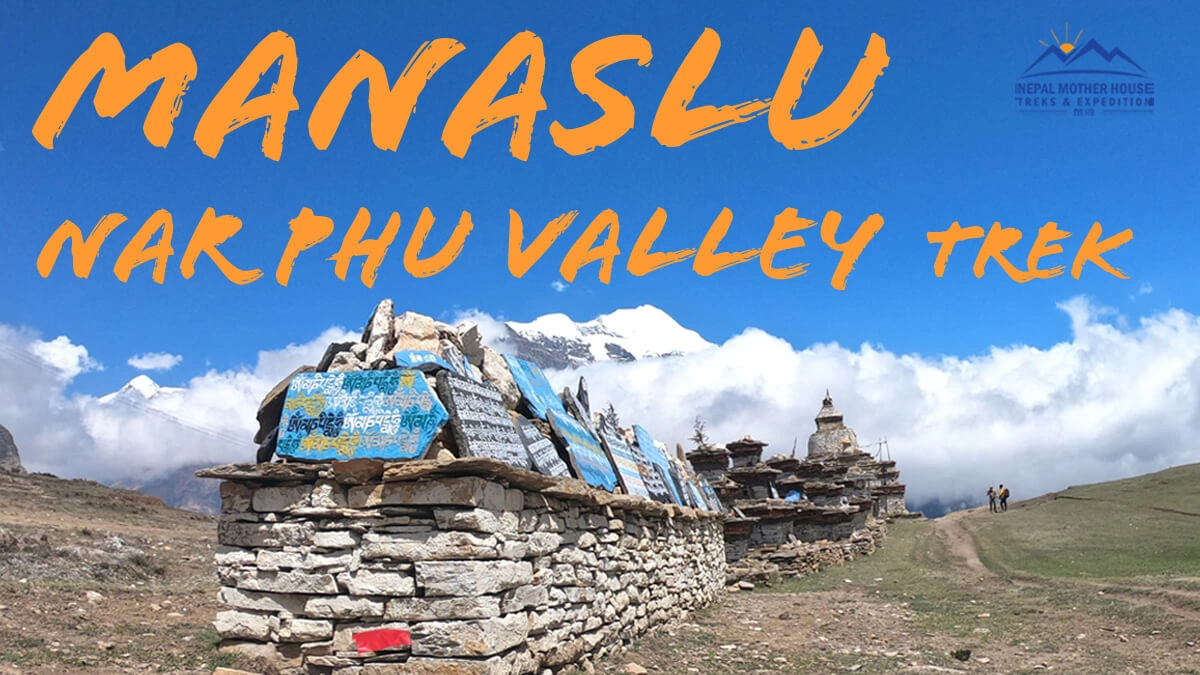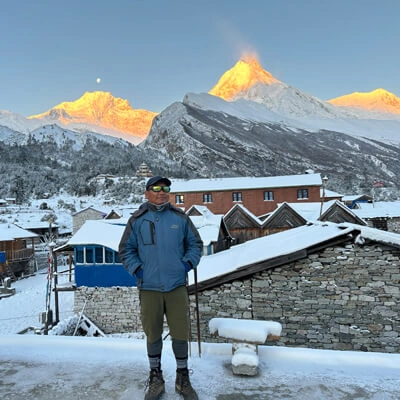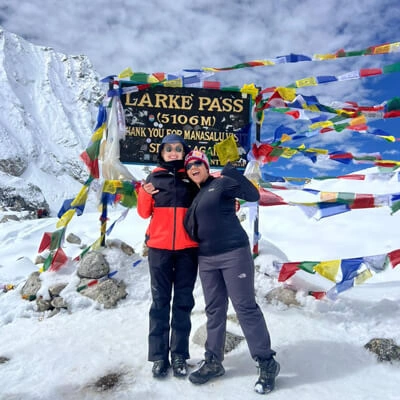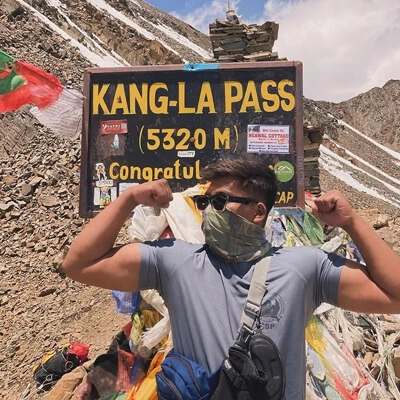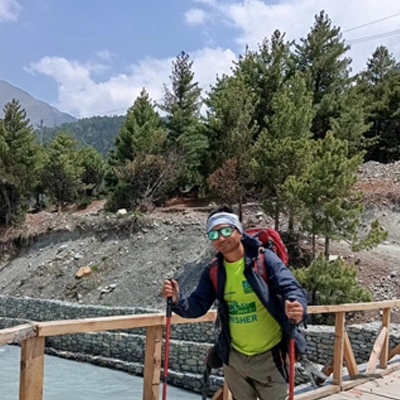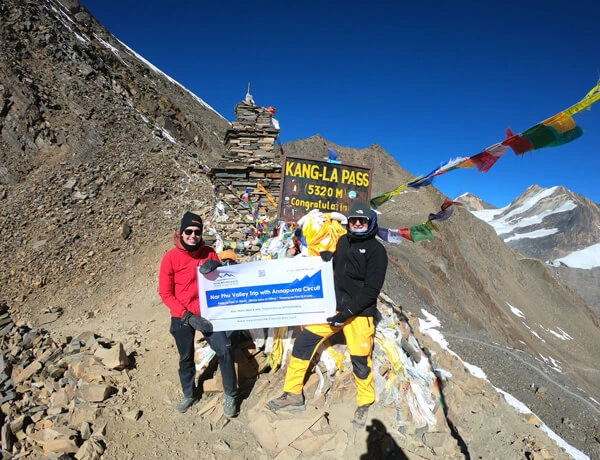The world’s 8th highest mountain, "Manaslu,” is known as a human god or god of human feeling. This trip takes place in the Gorkha district, in the midwestern part of Nepal. Our Manaslu and Nar Phu treks reward the adventurous trekker in the Himalayas with a supreme alpine experience. It is rich in biological diversity and natural beauty. Tillman and his team were the first to explore the Manaslu region in 1950. In 1956, Japanese expeditions became the first to reach the summit of Manaslu. Officially opened in 1991, the area has long been accessible to mountaineering expeditions. This trek is a combination of the recently opened Tsum Valley, the Manaslu Circuit (Larkya La Pass 4,930 m), and Nar Phu Valley with Kang La Pass 5,306 m in the remote Himalayas.
The trip offers spectacular mountain scenery along the Nepal and China border, a diverse range of ecosystems, and a rich blend of Tibetan culture. You will realize what inspired Eric Valli to create his world-famous documentary, "Honey Hunters of Nepal.” It is one of the best treks in Nepal, with breathtaking views of Mt. Himalchuli, Mt. Manaslu (8,163 m), Mt. Ganesh Himal, and other mountains. Besides the majestic backdrop of the snowcapped Himalayan ranges, this tranquil Himalayan valley is rich in ancient art, culture, and religion. People here are still following the polyandry marriage system, and they have unique cultures, traditions, and dialects.
The Highlanders celebrate unique festivals like Lhosar, Dhacyhang, Saka Dawa, Fanning, and others. The residents here report that they have seen or found the signs of Mehti, commonly referred to as the 'Yeti' or 'Abominable Snowman.'. Thus, there are a lot fewer trekkers on these routes compared to the Annapurna Circuit route at the end of the trek. All these regions (Manaslu, Tsum, and Nar Phu) are restricted areas and require special permits through an authorized trekking agency. Gorkha is the main entrance to the trip, but it is also possible to start from the Arughat Bazaar border of Dhading and Gorkha districts. The journey begins in the middle hills, the historic Gorkha, and then goes through the Budhi Gandaki River (Yashodhara Nadi) bank, passing a huge valley of lush rice terraces with animal husbandry and thatched huts, and nearby Narsingh Dham at Salyantar. Its pristine culture and traditions are similar to those of the former Tibetans in the Tsum and Nar Phu Valleys.
Besides this, you can take an alternate route to the Ganesh Himal Base Camp and Gumbalungdan, after Tsum Valley. The trail rejoins the Manaslu Circuit main trail at Dang and continues to Lho Gaun, Samagaun, Samdo, Dharmashala, and finally crosses the Larkya La Pass. We catch the Annapurna Circuit main trail at Dharapani and follow it until Koto, nearby Chame, and then continue to the untrodden Nar-Phu Valley. After spending a few days exploring the Nar Phu Valley, you will reach Ngawal near Manang through the Kang La Pass. It is a day hike from Ngawal to Chame, then drive back to Beshisahar-Kathmandu at your destination. You have the option to either fly from Humde Airport to Kathmandu or Pokhara or continue your trek to the Thorong La Pass or Mesokantola Pass from Tilicho Lake to reach Mustang, also known as the "forbidden kingdom of the Himalayas." Then end your trip to Pokhara by bus or plane from Jomsom.
This trip can be completed in as little as 34 days, or as long as you desire. Trekking in Manaslu used to operate mostly on a camping/tent camp basis, but nowadays it is possible to do a teahouse trek (stay in lodges) or a basic homestay. Off the beaten trail, our Manaslu Trek with Nar Phu Valley offers you the ultimate experience of your lifetime. Nepal Mother House is glad to organize your trip to Manaslu and Nar Phu Valley virgin trails any time throughout the year, except during snowy seasons. But the best times are September, October, November, March, April, and May. We’ll make your trip the best with our highly experienced local guide and staff and match your requirements and holiday schedule. We recommend this only to highly qualified and adventurous individuals who are eager to experience adventure travel and embrace a genuine rural lifestyle.


